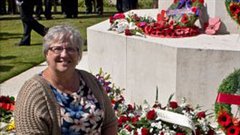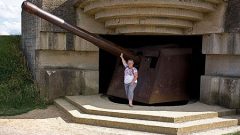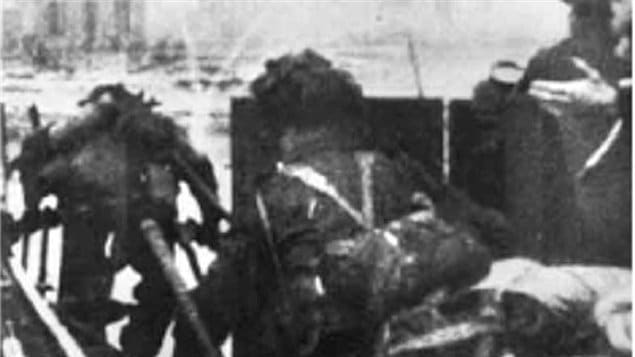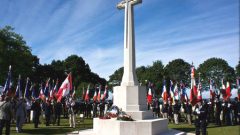For those who have walked the beaches and towns of Normandy getting a first-hand look at the enormity and danger of the D-Day landing on June 6, 1944, is always astounding.

Tens of thousands of Canadians faced the impossible dangers. Hundreds died on the beach, some 5000 Canadians were killed in the battle to free Normandy, and many more injured and maimed. Still they fought on. It is that heritage of courage and sacrifice that teachers like Anne McLeod strive to impart to their students today.
Anne McLeod teaches 15-18 year old students at Prince Andrew high-school in Dartmouth Nova Scotia.
ListenEducation is a provincial jurisdiction in Canada, and in many provinces Canadian history, and history in general, is not a mandatory subject.
That concerns teachers like Anne McLeod who says Canadian youth are not learning a strong foundation of how Canada developed and its achievements. Of Canadian contributions in the Second World War for example, many get their ideas from American movies and TV shows.

Longues sur Mer: One of the many massive guns in fortified bunkers lining the coast ranged against the Allies (CLICK to enlarge)
Because of that, and the lack of strong history courses in early grades, many Canadian teens lack “that concept of what our country has done, and why we should be proud to be Canadian, and why we should be proud of our country’s contribution in the past”
She tries to show that the Canadian contribution was every bit as courageous, dramatic, and important as those American portrayal in TV and in film, if not in more so.
She participated in a Normandy tour for educators last year and says, even as history teacher, actually seeing the places where battles took place, was an eye-opener and a moving experience.

Educators learning about the SS murder of 20 Canadian prisoners at Abbaye d’Ardennes on 7 and 8 June, 1944 (CLICK to enlarge)
Standing on a fortified bunker overlooking Juno and seeing what the Canadians faced as they struggled ashore, “was incredibly powerful and really gave me a different perspective”
She says even today, the gratitude still shown by the French in Normandy for the sacrifice of the Canadians and other Allies, is still fresh and deep.
Teaching these young students that the “men” who challenged the fortified defences were the generally the same age or barely older gives them pause to consider that these young people were willing to risk their lives to free a foreign people from a threat that didn’t necessarily threaten Canada.
She also tries to impart the realization that D-Day and the Second World War wasn’t something that just happened and was over.
She tries to get her students to realiase that “the ramifications of what the Canadians did in Europe in World War II, still echo today, and that history continues to affect them and our world”.
QUICK NOTES
- · In tribute to the 1st Canadian Parachute Battalion’s participation in D-Day, 50 Canadian Army parachutists representing Canadian Army Divisions from across the country, including both Regular and Reserve Force members, participated (June 5) in a series of “Friendship” jumps on June 5 in Ranville, France. Canadian parachutists conducted the jumps in tandem with parachutists from France, the United Kingdom and the United States.· 52 soldiers from the Canadian Army will also represent the Canadian Army’s Corps and Branches as part of a Veterans Affairs Canada-led delegation, which is participating in a commemoration ceremony on June 6 at Juno Beach, France.· D-Day was one of Canada’s most significant and successful military engagements with the third largest Soldier contribution, and a pivotal moment of the 20th century. D-Day and the campaign that followed in Normandy would help signal the beginning of the end of the Second World War.· Three hundred and forty nine Canadians were killed on Juno Beach on D-Day. Canadians suffered the most casualties of any division in the British Army Group: there are more than 5,400 Canadian graves in Normandy.· Canadian soldiers played a pivotal role in ensuring the success of the D-Day landings. In fact, by the evening of June 6, 1944, Canadian troops had progressed further inland than any of their Allies.. It is also important to note that by D-Day, other Canadians and allies had been fighting an extremely bitter battle for almost a year pushing the Germans and Italian military from Sicily and on up through Italy. And even earlier in 1941, Canadians had fought a desperate battle against vastly superior Japanese forces in an effort to save Hong Kong








For reasons beyond our control, and for an undetermined period of time, our comment section is now closed. However, our social networks remain open to your contributions.